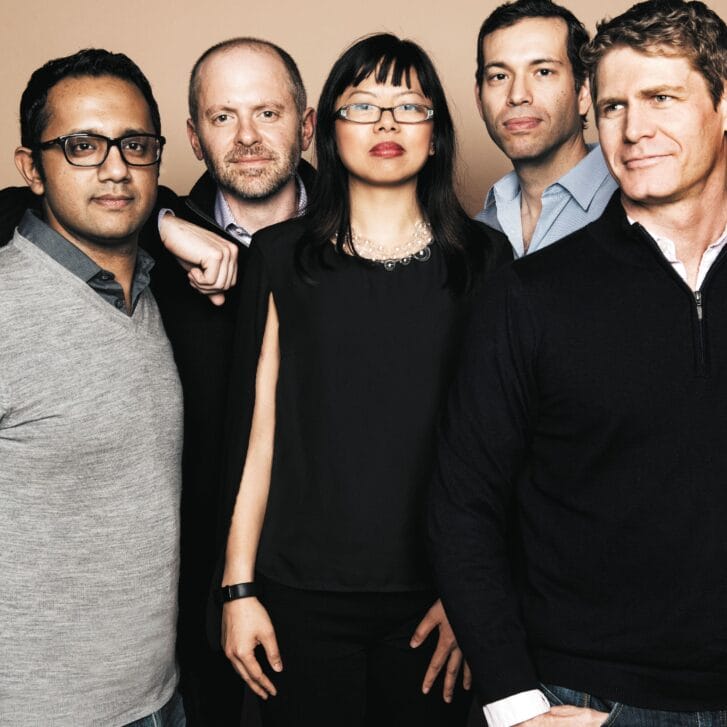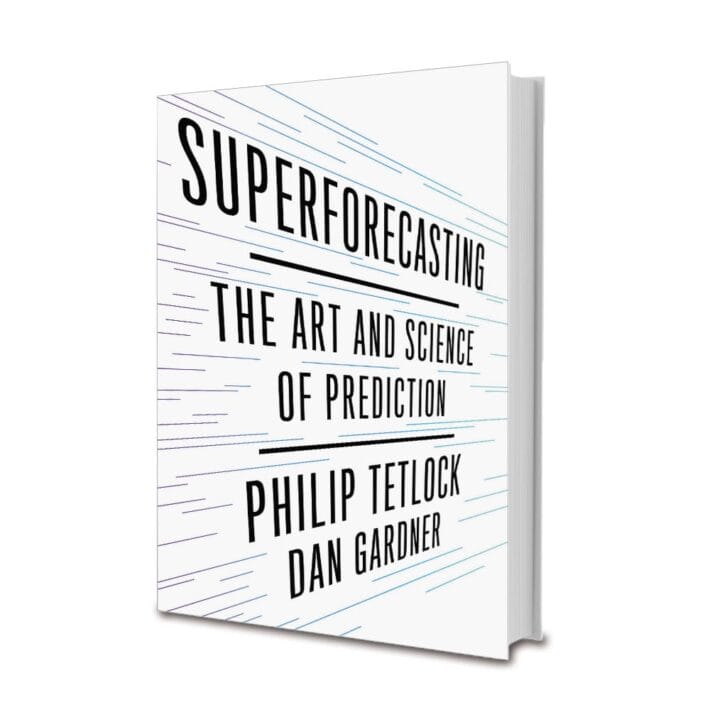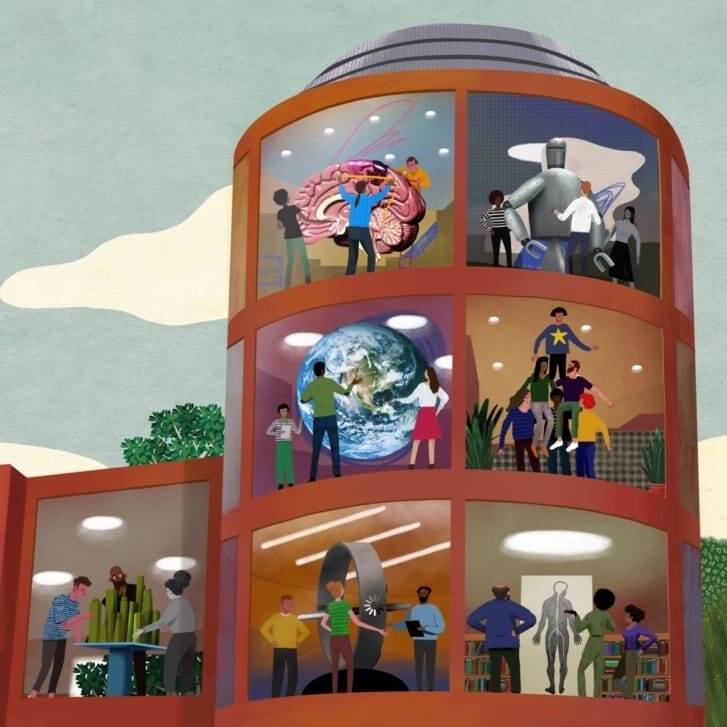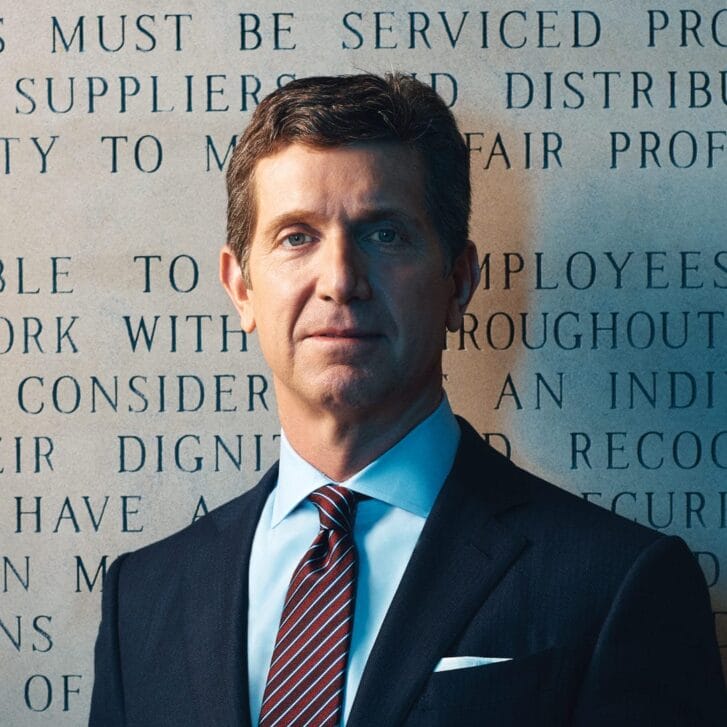It’s another whirlwind day for Adam Grant as he hustles into his office on the second floor of Steinberg-Dietrich Hall. Backpack over his shoulder, dressed casually in a North Face jacket, blue flannel shirt and jeans, he shakes my hand and unlocks the door to find his desk covered in mail. Grant hasn’t been on campus in a month, thanks to the promotional duties required when you’re a bestselling author with a second book, Originals, just released to widespread acclaim. Grant’s organizational psychology classes are always scheduled for the fall, and it’s logical that one might think this warm, bright afternoon in early March would be a quiet one for him. But he’s got a tight window for chatting, with a meeting in less than an hour, emails to answer, the third annual Wharton People Analytics conference he’s co-hosting in a month, a trip to England in a few days, and those intimidating mail piles to tackle. This is typical. And yet, he says, “There’s not a day that goes by where I don’t think, you know, I probably could have gotten more done. There are never enough hours in the day.” There’s also not a day that passes, even if he’s nowhere near campus, when Grant isn’t teaching.
Spend a few minutes with Grant and it’s clear he does not think like most people his age, 34, or any other age for that matter. I ask him how his life changed after his first book, Give and Take, a study of the benefits of helping others; it earned raves from the Wall Street Journal to Oprah Winfrey. Grant says the demands on his time became so great as a result of its success that he made a list to help him prioritize: family first, then students, colleagues, and in fourth place, everyone else. “But that’s also motivating,” says perhaps the most productive person you’ll ever meet. “It’s like, I’m going to be more efficient today.”
“No one knows how his brain functions,” says Jonathan Tugman, one of Grant’s MBA students and a member of his handpicked research team at Wharton (nicknamed “Impact Lab” for its goal of utilizing academic data to effect change). Grant has roughly 300 students across four sections in a semester. By the end of the second week, his goal is to know all of their names; he sometimes promises that for each one he fumbles, he would dismiss class five minutes early. For Grant, this isn’t a memorization exercise, it’s an opportunity to set a goal and create an incentive that would both benefit his students and motivate him to succeed. “It’s like if you took an encyclopedia and gave it humanity,” says another former student, Justin Berg.

You can see why Grant has become the Indiana Jones of Wharton. His distinctive look—the shaved bald head that frames a youthful face—makes him instantly recognizable. When he speaks, his eyes widen as if inflated by sheer enthusiasm. Get him going on his research into human behavior or a class project, and Grant’s volume spikes like a car engine in park with its engine revving, eager to speed away to some unexplored place. This is why there are lines for his office hours, waiting lists and applications for admission into the lone undergraduate course he teaches, an endless cascade of requests for help, insight, advice, anything.
His books have elevated his profile, and in turn, expanded his audience. But for Grant, books are simply extensions of his work in the classroom, teachable moments across 300-some pages for students of all ages, everywhere. Grant will tell you Give and Take was a deep dive into a value system, a worldview that’s the very core of who he his—consider it altruistic academia, research designed to help people in practical ways. In a sense, that book was an exploration of himself. With Originals, he examines the habits and strategies of trailblazers and nonconformists who make a difference by thinking differently. Sounds a lot like him, too.
Harry Potter and Ask Jeeves
The day before Originals was released in early February, Grant is minutes away from taking the stage before a full house at the Authors@Wharton series (which, incidentally, Grant himself launched in 2012). In the audience, a sophomore business major strikes up a conversation with the woman next to him: “Have you ever been to an Adam Grant talk before?” There’s a palpable anticipation in his voice, a sense of awe, like a kid who’s about to see Bob Dylan for the first time, or the Pope.
Grant’s presentation feels more like the lecture you wish you had as an undergrad than a promotional talk. He paces the stage in his usual Silicon Valley semi-casual uniform—untucked plaid shirt, dark denim jeans, sneakers—and ticks off the key revelations in his book, punctuating each with a pop culture reference or an exercise. To show how original thinkers break free from prototypes, he describes a novel that was rejected over and over for not fitting the mold for successful young-adult fiction, given its length and subject matter. “I don’t care how long Harry Potter is,” Grant yells. “This is a badass book about wizards!” He later illustrates the challenges of communicating ideas by asking each audience member to turn to a neighbor, tap the rhythm of a well-known song, and estimate the probability that your partner will know which tune you’re playing. It’s harder than some expect, especially when the songs range from “Old McDonald” to “Call Me Maybe.” He peppers his talk with jokes, like this line after explaining that pioneers fail at a higher rate than those who follow: “I think there’s a search engine that went this way, but when I asked Jeeves I couldn’t get an answer.” His pearls of wisdom offer both surprising, data-based insights and a glimpse inside his unique mind: “As much as progress feels like oxygen and delay feels like death, you will discover that if you procrastinate a little bit, you actually become more creative.”
Those ideas are at the heart of Originals, which represents an evolution of sorts in Grant’s thinking. Give and Take, his first book, examined the way interpersonal behavior in the workplace can lead to success, depending on whether you’re a “giver” (generous, helpful), a “taker” (a me-first, dog-eat-dog type), or a “matcher” (trades favors evenly, quid pro quo). Grant himself is a giver, and that book was an attempt to explain his own philosophy towards relationships, backed by data and anecdotes. With Originals, Grant explores the habits and strategies of game-changers who think differently from him.
He learned that the best advocates for your ideas are not the colleagues who shower you with praise but the disagreeable ones whose trust is hard-earned yet impactful. “They will be much more likely to improve your idea because they’re going to push you and challenge you,” Grant says. “Disagreeable people are willing to run through walls for you, once they’ve chosen to support you.” Originals are often procrastinators who think ahead but don’t rush the execution of their ideas; as evidence, Grant cites Martin Luther King, Jr., who planned his “I Have A Dream” speech for months, yet tweaked it right up until the moment he spoke, and largely ad-libbed its indelible climax. As a result of his research, Grant’s own habits have changed: he has become a strategic procrastinator, and now keeps an inspiration journal that he updates and re-reads weekly. Rather than risk a “false negative”—quickly dismissing an idea that might not be so bad after all—Grant returns to it with fresh eyes, and often finds patterns of thinking he’d overlooked, or new angles into thoughts that felt half-baked at first.
Across the vast galaxy of gifted professors, at the University of Pennsylvania and beyond, Grant’s star is bright and easily seen with the naked eye. His bona fides span the full range of his pursuits. He’s won the Class of 1984 teaching award as Wharton’s highest-rated professor for four consecutive years, and in the decade since earning his doctorate, has published 38 A-list journal articles—an impressive output for anyone, especially a researcher who’s also a regular New York Times op-ed contributor and blogger. After Grant earned tenure at 29, the youngest ever to do so at Wharton, his name appeared on one list after the next: top 25 most influential management thinkers around the globe, top 40 business professors under 40, biggest idea of the year for his insights in Give and Take. His recruiters for presentations and consultant work are a who’s who of industry, from Google to Amazon to Goldman Sachs to Disney to the NFL. Malcolm Gladwell praised Grant as one of his favorite thinkers. Facebook COO Sheryl Sandberg calls him “one of the most important influences in my life.”
Sandberg’s forward to his new book begins with this line: “Adam Grant is the perfect person to write Originals because he is one.” That stands in sharp contrast to the portrait Grant paints of himself. As an undergraduate at Harvard, Grant had no master plan for his future. He had ruled out careers like investment banking and management consulting for one essential reason—both would limit his impact on the world. If that sounds grandiose, well, Grant himself wouldn’t blame you for thinking so. But while he had big ambitions and a precocious drive, Grant was also an introvert and a self-described conformist. “I followed every rule,” he says. “I remember getting called to the principal’s office in elementary school and crying. Even though I wasn’t in trouble, just the idea of going there was like I’d done something horribly wrong. In high school and college, I was terrified to be in a room with someone underage drinking alcohol.”
Grant’s light-bulb moment arrived when he took a personality psychology class with Brian Little, a pioneer in the field and one of Harvard’s most beloved professors. “It was a completely transformative experience,” Grant says. “I’d walk away from class torn between pondering the meaning of life and laughing at his jokes. I gained a tremendous amount of self-awareness in that class. I thought if I could have even a fraction of the impact on students that Brian has had on me, then this would be the most meaningful career I could imagine.”
Now a professor of psychology at Cambridge, Little describes Grant as unlike any student he’s ever taught. To illustrate that point, Little says he wanted to nominate Grant for a Rhodes scholarship, fully confident that his student would win the honor. (Besides being a star undergraduate, Grant met the Rhodes traditional athletic qualification by dint of being an all-American springboard diver.) But Grant demurred, given he was intent on heading to the University of Michigan’s top-ranked organizational psychology program for graduate school. Grant saw a path to his future and (politely) refused to veer from it. That single-minded focus was just one of Grant’s remarkable traits. “I was struck by his alacrity, his quickness—you ask a question and he’s done more research before you’ve had a second cup of coffee,” Little says. “He had a fulsome, wholehearted engagement with whatever it was, academic or collegiality. When you meet a student like Adam, you just try to get out of their way, help them in any way you can because you know he’s destined for great things.”
Great things came Grant’s way, but not easily. Research came naturally. With every other step forward in his career, though, Grant had to re-engineer himself to achieve his goals, like some supercomputer updating its own operating system. The early feedback from his students, first at Michigan and later at the University of North Carolina, was brutal (one wrote in an evaluation, “You’re so nervous it makes me uncomfortable.”). Public speaking beyond the classroom was another skill to learn, a performance that was unlike the dialogue he fostered with students. Grant’s hard work in both arenas paid off: now he earns near-flawless student evaluations and recently spoke on the same TED talk bill with Little, an experience Grant compared to “opening for the Beatles.”
Writing his first book was a similar challenge, and it almost didn’t happen at all. Grant planned to help noted psychologist and author of The Paradox of Choice, Barry Schwartz, with his next book, until a group of Grant’s students insisted that he pass in favor of striking out on his own. “I didn’t know if anyone would believe my ideas or read a book I wrote,” Grant says. He took their advice, but his first crack at Give and Take was a disaster. “My agent said, ‘Write like you teach, not like you write for journals.’ I was like, oh yeah. I’m going to rewrite this.” Grant threw out his 102,000-word first draft and started over.
To most writers, the suggestion of scrapping an entire manuscript and trying again from scratch is akin to testing out a medieval torture device. (Could we interest you in taking the rack for a spin? A few minutes in this iron maiden, perhaps?) Grant was frustrated, sure; despite evidence to the contrary, we can confirm he is indeed human. But that feeling didn’t last long. Where some might see crushing defeat, Grant saw an opportunity to learn a new skill, to speak to a new audience. The result was his first best-selling book. But the reward was exactly what he explored in Give and Take—the benefits of helping people.
Starting with a Failure
A week after my visit to his office on campus, I’m trying to get Grant on the phone for a follow-up interview. As you can imagine, this is no easy feat. Fifteen minutes past our scheduled time, I’m thinking finally, a sign that he’s imperfect, stretched a little too thin. My inbox dings. It’s Grant. “So sorry I’m late—at the UK prime minister’s office and they ran behind. Now need to go to next event. Can we reschedule?” Among the reasons for missing an appointment, a sit-down with David Cameron’s staff to share ideas, promote innovation and encourage fresh thinking ranks pretty high. For Grant, it’s (sort of) just another day, like the one he had recently at the White House for an audience of about 150 science, technology and employment officials. “These groups are very different,” he says. “But they’re all grappling with the same issues—how to lead, how to manage people.”
Grant begins Originals in typical self-deprecating fashion—with a failure, not a success. A few years ago, a Wharton student pitched Grant on investing in a retail startup he hoped to launch with three classmates. Grant saw red flags everywhere and passed. The online eyewear outfit, Warby Parker, became a monster success; Fast Company named it the most innovative company on the planet last year. Grant called the missed opportunity “the worst financial decision I ever made.”
He tells me another story about an email chain he helped to start as a high school senior, hoping to connect with other incoming Harvard freshmen. By the time he arrived in Cambridge, the list had over 200 members and Grant had dozens of new friends. (One of them would later be the best man in his wedding. Did I mention that Grant is also married with three young kids?) His friends encouraged him to expand the idea, to create an online gathering place for people to talk about classes or spread the word about a party, but he let it be what it was. A year after Grant graduated from Harvard, a kid who lived in the house next door created his own version. That kid was Mark Zuckerberg. “It never in a million years would have crossed my mind to try and make that a reality, to become an entrepreneur,” Grant says. “I wrote this book to encourage more people to take that kind of initiative.”
Unlike his first book, Originals is Grant’s quest to find people who think in ways he does not, like the NBC executive who gambled on a weird sitcom with unlikable characters called Seinfeld, or the bold mid-level CIA analyst who changed that rigid, inflexible agency from the inside, at great professional risk. He also wanted to learn from the mistakes of geniuses like Steve Jobs, who—in the inverse of Grant’s move with Warby Parker—threw his full support behind the Segway.
Grant’s triumphs, his failures—he uses all of them to make larger points. A former student says he’s heard talk from cynical peers who don’t know Grant and suspect he’s showing off with his mental gymnastics and tales of first-hand encounters with boldfaced names. That’s laughable to anyone who has sat in his class, says Justin Berg, who took Grant’s first undergraduate course at Michigan and followed him to Wharton for a Ph.D. “At the end of a course, professors want to sound like experts. Adam was talking about all the ways he messed up. It was very unconventional. It was the first time he talked about himself all semester. At that time, he was already a rising star. It was just very humanizing.” At his Wharton book talk, Grant recalls a time early in his career when he confided in a supervisor after seeing some troubling behavior from a higher-up. She dragged him into a bathroom and said if he told anyone else, he’d be fired on the spot. Ever the conformist—at least in terms of workplace politics and job security—Grant kept quiet. But a spark had been ignited. Why is it so hard to speak up?
That question would eventually lead him to write Originals, and his books have led him to rub elbows and exchange ideas with some of the world’s most influential people. Still, Grant is humble to a fault. When I ask if it’s strange to be a celebrity of sorts these days, a rock star in the arena of fresh ideas, he cringes: “It’s slightly unnerving to hear you describe it that way.” Yes, he considers Sheryl Sandberg a close friend. “She’s a big leader,” he says, as his mind’s engine prepares to rev up. “But she’s also a data geek and those are the kinds of people I hang out with all the time!” After Grant spoke at Bad Robot, Star Wars director J.J. Abrams’s production company, Abrams said his favorite part was hearing Grant quote both Robert Benchley and Erma Bombeck. “This is something you’d expect to hear on campus,” Grant says. “As you get to know these people, you remind yourself they’re changing the world, not just really smart, intellectually curious people who you learn a lot from. But I am nothing like these people. I’m doing research on things I’m curious about. They’re having a fundamental influence on the world.”
Improve or Enjoy?
Back in Grant’s office, I ask him what seems like a simple question: Is the feedback you’re getting on Originals similar to what you heard about your first book? Grant rarely hesitates to answer or stumbles through a response, and this is no exception. “I’m going to do a two-by-two for you,” he says, “so it will be like, similar positives and negatives, and then new negatives and new positives.” It’s as if there’s a chart on a PowerPoint in the room that only he sees.
The criticism he’s heard about both books highlights how Grant now straddles the worlds of academia and popular culture—not enough focus on the studies he draws from unless you dig through all the footnotes. But one new positive is that Originals has inspired people, which is perhaps only surprising to Adam Grant. Grant doesn’t have any tattoos—way too nonconformist for him, even in this ink-friendly cultural moment—but if he ever considers one, I’d suggest the phrase “Pay It Forward,” a philosophy he lives, rather than subscribes to. He encourages his students to use his star-studded LinkedIn page as a resource. Justin Berg’s research is discussed at length in Originals and in Grant’s speaking events. His mentor, Brian Little, is mentioned after a quote from E.B. White: “I arise in the morning torn between a desire to improve the world and a desire to enjoy the world.” For Grant, that’s not an either/or proposition. Even those moments when he’s forced to prioritize and occasionally utter that dreaded word—no—get a positive spin. “Every no,” he says, “is a chance to say yes to something that matters more.”
Brian Little echoes the sentiment I hear over and over regarding Grant’s seemingly boundless instinct to help people. “With all of his brilliance and enthusiasm, he’s also just a hell of a nice guy,” he explains. “Somebody that driven can often have a negative side. They’re a bit abrasive, inconsistent in their allegiances. Adam is just a really good man.”
Still, I wonder—does all of the pressure to squeeze more hours out of each day, to constantly better himself, to be a giver and an original, stress him out? Just thinking about his schedule and his output makes me sweat (let’s not even contemplate his inbox). Grant admits he feels that weight, but usually only when he falls behind on his lengthy to-do list. “If anything,” he says, that mental engine humming again, “I want to put more pressure on myself. The higher my expectations of myself are, the more I’m able to contribute.”
Maybe Grant doesn’t think like Jobs or Sandberg or Abrams. But by inspiring leaders like them, he is influencing the world. He’s also an original, by perhaps any definition other than his own. The proof is that gap he spoke about wanting to help people close, the one between who they are and who they want to be. For Grant, that chasm never narrows. There’s always something to learn and a new lesson to teach.
Richard Rys is features editor of Philadelphia Magazine.
Published as “Adam Grant, Original” in the Spring/Summer 2016 issue of Wharton Magazine.


























